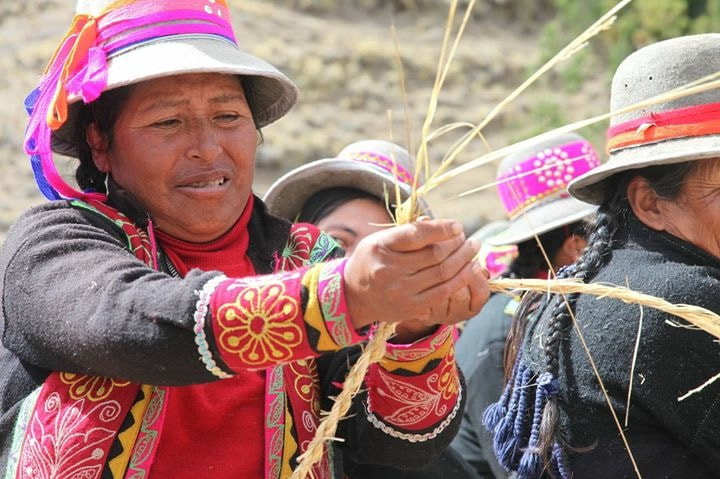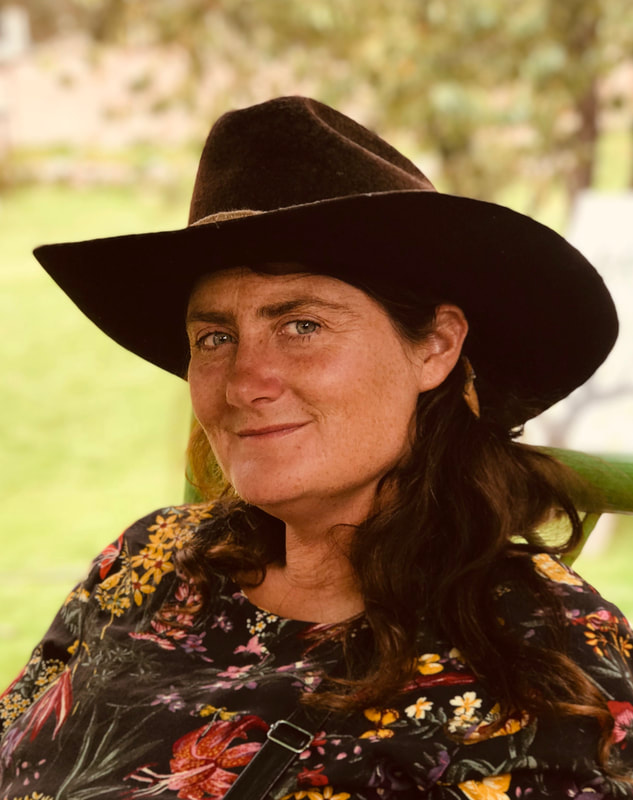|
Visiting Q'eswachaka is one of my favourite things to do in the Cusco region. Every year the communities surrounding the bridge, which is located in the Canas province of Cusco, near the village of Quehue, gather to rebuild the bridge, entirely by hand, from twisted Q'ishwa grass. The suspension bridge is approximately 28 meters long and surprisingly stable, spanning the Apurmac river canyon. It's amazing to visit and cross the bridge at any time of year though. If you have a chance to attend the annual bridge building, a 4 day work event with a traditional dance and gastronomic festival at the end, you'll be one of very few visitors. This year we were there for the last two days of the building. I was shocked by the absolute intimacy of the whole event. We arrived to the remote area down a very winding road and found hundreds of community members, all in their traditional clothing, sitting in small groups twisting grass. I sat with them and they showed me how to make the little ropes. On the roadway on both sides of the canyon, high above the actual bridge, women make the small ropes. They use a technique of double twististing wet and pounded grass by sliding one hand over the other, somewhat like spinning raw wool into yarn. The locals consider women "bad luck" and during the bridge construction no women, not even a journalist, is allowed to go down to the lower part to the site of the bridge. During the 4 days of the construction 4 local 'curanderos' (traditional Andean shaman) remain on site to continuously perform a protection ritual to bless the bridge. This is one of the few events where you will see all of the men participating in their traditional clothing. In most of the region men have not conserved their traditional clothing in the same way as the women have. Here they are all dressed in black and white woven wool cloth, called "bayeta". The men climb up and collect the small ropes from the women. They twist them into 6 huge rope which are the main support for the bridge and use other small ropes to create sides for the bridge. The original Incan bridge pillars and tying spots are still intact and used. This journey is a 3 hour drive from Cusco or a 4 hour drive from The Sacred Valley. The last part of the road is a very winding road down the canyon, full of pothotes, so get ready to hold onto your hat. But it's well worth it to experience crossing this amazing creation and to admire ancient traditions and engineering that are still very much alive today. Check out our options for daytrips to the bridge on our site Frontierlab.
3 Comments
Aline
11/23/2018 03:43:47 pm
So great Kyd! Well done! Would love to do this!
Reply
Mahlon Barash
3/6/2019 09:22:20 am
Please tell me the dates of this excursion, how much does it cost, lodging arrangements, etc. Thank you, Mahlon Barash
Reply
1/31/2021 03:15:01 pm
Wow! Excellent. When I'm reading the whole content I feel so smart. Very informative article that helps me a lot. I will share this to my friends and classmates. Wait. Just sharing this website (www.horses-haarlem-oil.com), I read also about the benefits of their products. By the way, I am so happy to read your content here. I will share this link/website of you to my fellows. Thank you and God bless! Have a great day, ahead!
Reply
Leave a Reply. |
AuthorKyd Campbell is a Canadian born horsewoman, designer, and lifelong traveller. Based in Peru she lives with her herd of horses and can’t wait to guide you through new and beautiful environments and experiences. Archives
April 2019
Categories |









 RSS Feed
RSS Feed